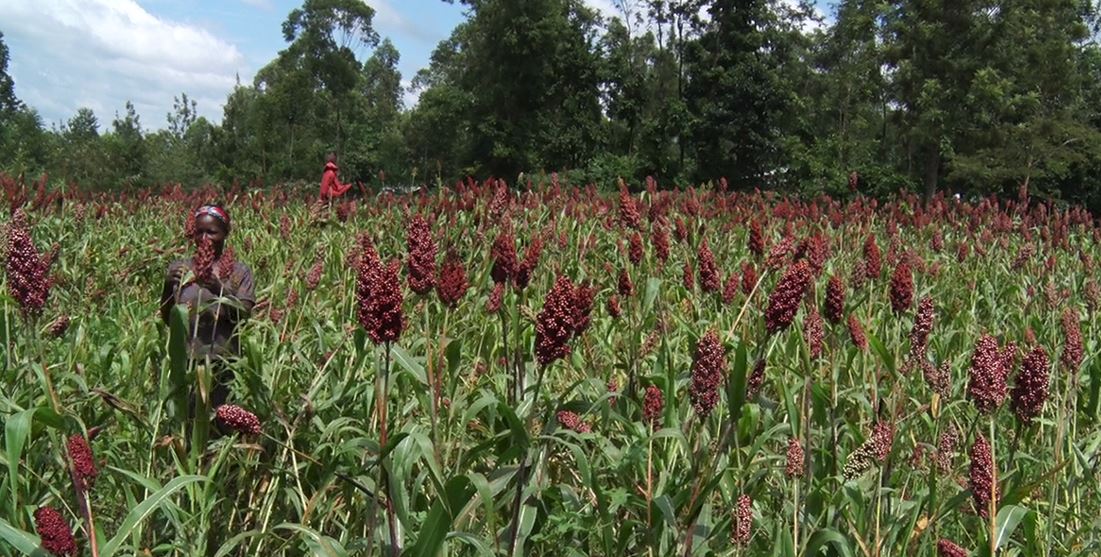A section of widows from Mumias East who embraced sorghum farming are expecting a bumper harvest from the crop, which has already reached maturity.
The Kakamega Widows Empowerment Project (KCWEP) supported over 500 farmers from Mumias East to diversify into sorghum farming to reduce hunger and improve nutrition status.
The project, which is funded by the United States Agency for International Development (USAID) through the Young African Leaders Initiative (YALI), was meant to provide an alternative source of livelihood to widows who relied on sugarcane farming.
According to KCWEP’s Director, Gerry Mwanzi, a baseline survey they carried out before they launched the project showed that the beneficiaries were hard hit by hunger in 2022 after their maize crops failed and lacked an alternative crop.
He says that now all the 500 farmers who have been supported are harvesting sorghum, which they will use to feed their families and sell some bags to earn a living.
He noted that the beneficiaries are going to be trained on value addition to increase their income streams through different products made out of the crop.
According to the officer in charge of Monitoring and Evaluation at KCWEP, Fred Anami, the organisation has also supported the beneficiary widows to form self-help groups where they can empower themselves through the sale of sorghum through table banking and other investments.
He says that the widows are going to benefit from the crop, which takes a shorter period to grow and mature, and when mixed with maize flour, it can sustain a family for a longer period, hence reducing hunger.
Anami urged the beneficiaries to also intercrop the sorghum with other crops to enable them to have enough food at all times and sell the surplus.
One of the beneficiaries, Tabitha Eseli, from the East Wanga Sorghum cluster group, appealed for more partners to support the project, which she says will reduce poverty in rural homes.
Josphine Sakwa said that sorghum is doing well as compared to maize farming, whose harvest is not enough to feed a family for a year.
She says that investment in maize farming is too high as compared to sorghum farming.
After planting the crops on a quarter of an acre of land, Sakwa says she will now extend to more than half of her 2 acres of land following the bountiful harvest.
By Moses Wekesa



